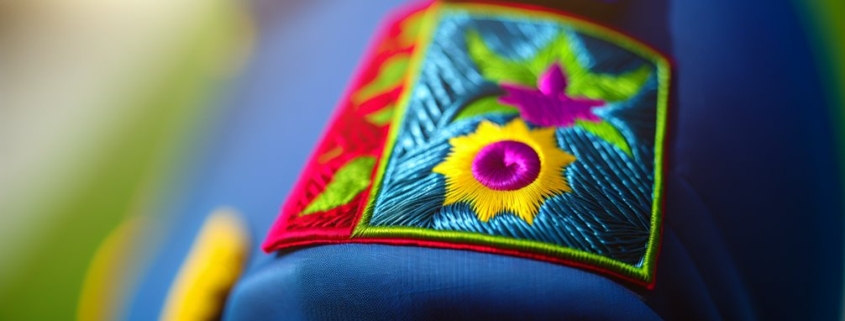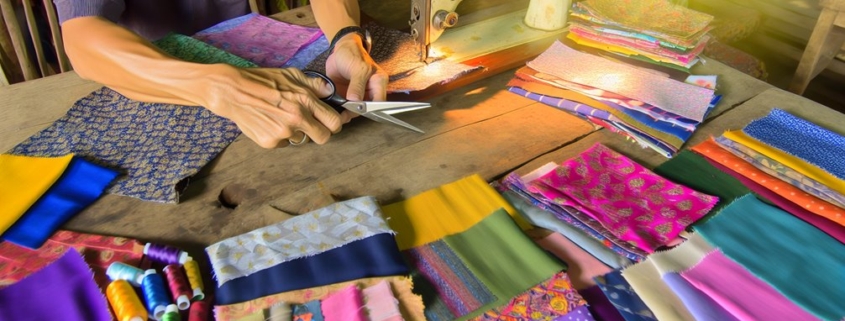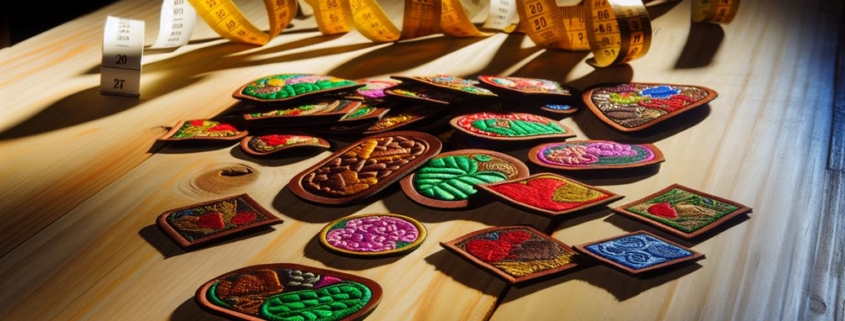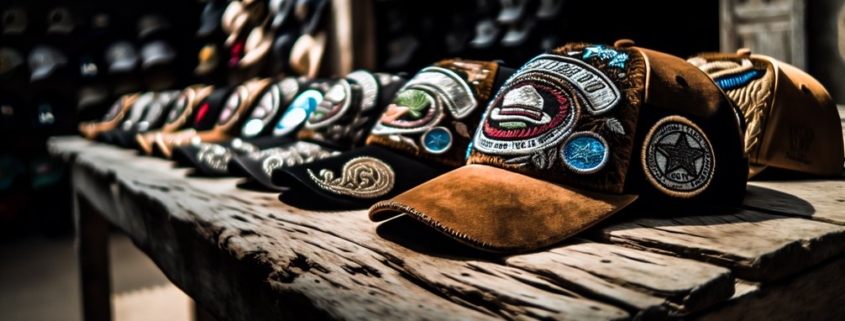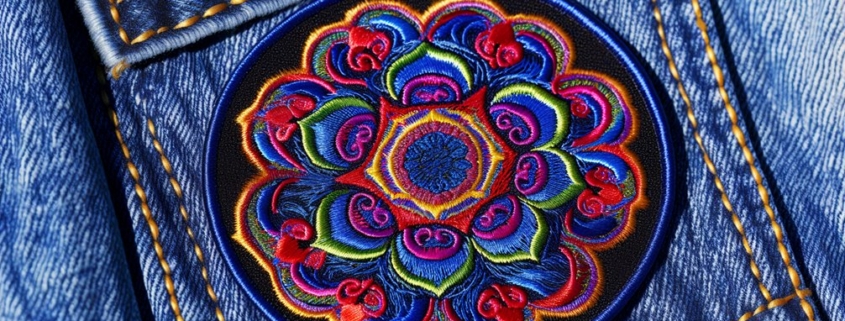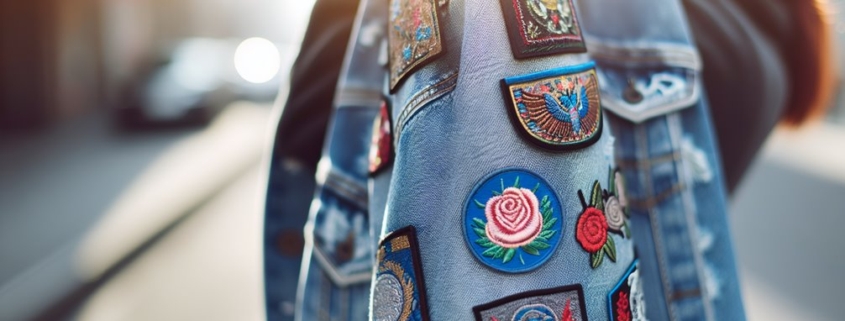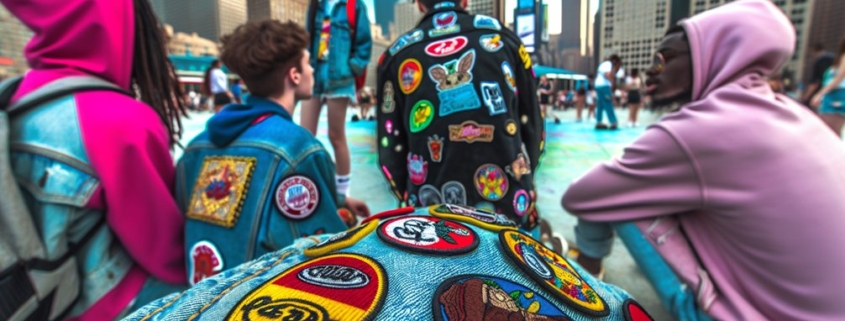How to Personalize Bags With Custom Patches
in Bags, Custom Patches, Patch ApplicationsPersonalizing bags with custom patches involves careful selection and design to guarantee compatibility and cool appeal. Begin by choosing a bag material such as leather or canvas; next, select patches made from suitable materials like embroidered fabric or PVC, considering themes that mirror personal style. Thoughtful patch arrangement is essential—balance colors and typography for clarity. For secure attachment, use sewing or adhesive techniques, with sewing recommended for lasting results.
Let’s break down the whole process step by step, which should guide you in achieving a personalized bag that truly stands out.
In This Blog;
- Choosing bag material compatible with patch type.
- Selecting patch themes and colors representing your personal style
- Sketching layout designs to achieve a balanced approach.
- Sewing or adhesive methods for secure attachment.
- Maintaining to preserve patch quality and bag appearance.
Choosing the Right Bag
Selecting the appropriate bag serves as the foundational step in creating a personalized accessory with custom patches. The choice of bag materials greatly influences the final look and durability of your personalized item. Options range from sturdy leather to versatile canvas, each offering distinct qualities. Leather bags exude sophistication, while canvas options provide a more casual feel, ideal for frequent use.
Understanding bag styles is equally crucial. From backpacks to totes, the style dictates the overall aesthetic and practical use.
- Backpack: may suit students carrying books, whereas
- Tote: might be perfect for casual outings.
Ideal Size & Color of the Bag
A compact bag may be suitable for minimalists, whereas larger options accommodate more items, offering increased functionality. Bag colors also play an important role in personalization, allowing for either bold statements or classic subtleties. Neutral colors like black and beige provide versatility, while vibrant hues can add a pop of personality.
- Recognizing bag functions guarantees the chosen bag meets your specific needs, whether for daily commuting or special events.
- Considering bag brands can be advantageous, as reputable brands often indicate quality and reliability, making sure your personalized creation endures over time.
Selecting Patches for Bags
A well-selected patch can greatly enhance the look and feel of your bag, transforming it into a unique piece of art. Consequently, understanding patch materials is fundamental. Embroidered patches are classic, providing a traditional look with intricate designs, while PVC patches offer a modern, robust option suitable for bags exposed to harsh conditions.
Equally important is the consideration of patch styles. Vibrant, colorful patches might appeal to a younger audience or be suitable for casual bags, whereas minimalist designs might suit professional settings. Additionally, consider how these patches will interact with the bag’s fabric to guarantee stability. Certain patch materials may adhere better to specific fabrics, reducing the risk of peeling or damage.
Designing Your Layout
Designing your layout involves more than random placement; it requires an eye for aesthetics and a keen understanding of design principles. Begin by considering the color combinations. Harmonious colors can create a unified look, while contrasting colors can make each patch stand out. The key is balance—too much contrast may overwhelm, while too little may lack visual interest.
Typography choices are equally important, especially if your patches include text. Fonts should be legible and complement the overall theme of your bag. Avoid mixing too many different fonts, as this can result in a cluttered appearance. Instead, aim for consistency and readability.
To effectively design your layout, follow these steps:
- Sketch a preliminary design: Draft a rough outline of your desired layout, considering both color combinations and typography choices.
- Experiment with different arrangements: Move patches around to see how various configurations affect the overall aesthetic.
- Seek feedback: Show your design to friends or family to gain fresh perspectives and refine your layout.
Deciding Placement onto Bags
Placing a patch on a flap or pocket enhances visibility but may inhibit access. Carefully analyze the bag style to ascertain ideal areas for patch placement, taking into account seams, fabric texture, and existing design elements.
In addition to visibility, consider the overall bag style as it greatly affects how patches are perceived. A minimalist bag may benefit from strategic patch placement that adds character without overwhelming the design. Conversely, a more eclectic bag style might allow for a more liberal application of patches, creating a bold statement.
Balance and symmetry should also be considered, ensuring that the patches do not create an unbalanced or cluttered appearance.
Attaching the Custom Patch on Bag
Choosing the right method for attaching patches can greatly affect the look of your personalized bag. Two primary methods are prevalent: sewing techniques and adhesive options. Each has its advantages and considerations, making it vital to choose the right one for your specific needs.
- Sewing Techniques: This traditional method involves stitching the patch onto the fabric. It is highly recommended for those seeking a robust, long-lasting attachment. Sewing offers a strong hold and can withstand various conditions, but it requires basic sewing skills and tools such as a needle and thread.
- Adhesive Options: For those less inclined to sew, adhesive options are available. Iron-on patches use heat-activated glue, providing a quick and easy attachment method. Verify that the adhesive is compatible with your bag’s material for best results.
- Combination: For maximum security, consider combining both methods. Using sewing techniques along with adhesive options guarantees that the patch remains firmly attached over time, combining durability with ease of application.
How to Ensure Patches Long Run
Selecting the right patch materials is the first step in achieving long-lasting results. Opt for high-quality fabrics that offer weather resistance to withstand various environmental conditions.
Factors to Contemplate | Details |
Patch Materials | High-quality, weather-resistant fabrics |
Weather Resistance | Protection from rain, sun, and wear |
Patch Care | Regular cleaning and maintenance |
Sewing Techniques | Strong stitches for secure attachment |
Adhesive Options | Heat-activated or pressure-sensitive |
Familiarize yourself with different patch styles and their specific needs to tailor your approach better. Whether through sewing or adhesives, the key is to anchor the patch firmly to the bag.



